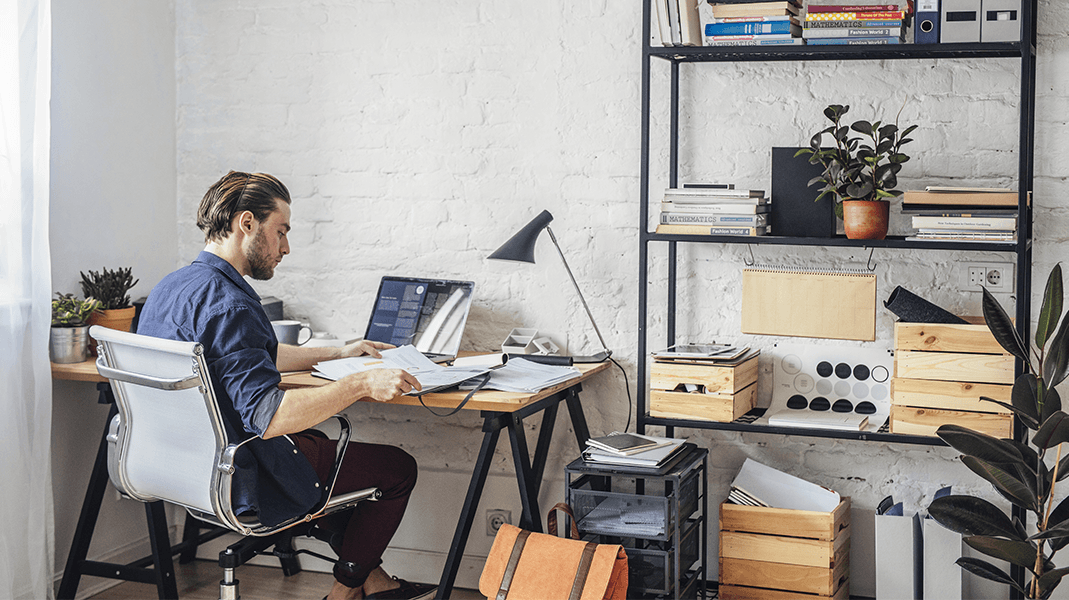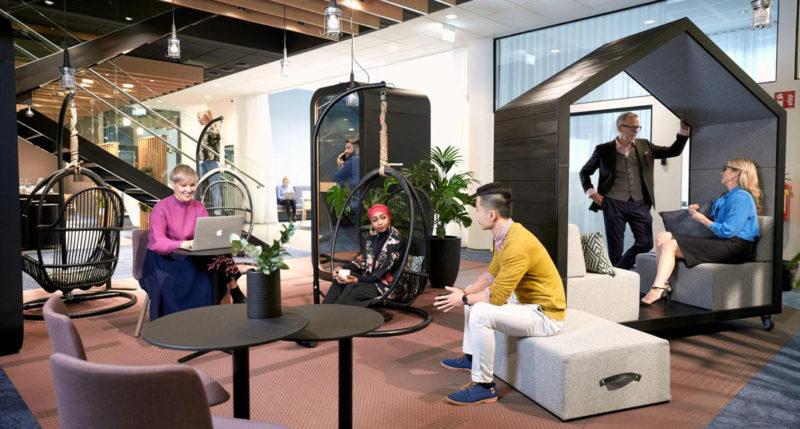
The Coronavirus pandemic is changing the way we work, as millions of people suddenly find themselves working from home.
Whilst this comes with some benefits (no commuting, yay!), it can also throw a few spanners in the works depending on living arrangements, your job, or simply the unusual circumstances we’re in.
That’s why making sure you have a good home workspace is so valuable. Not only can it help with productivity, but it is important for protecting your mental and physical well-being, too.
Set yourself up for success in your ‘home office’ by following these four tips…
1 – Clearly Define your Workspace
It can be tempting to use working from home as a chance to check emails from your bed or answer work calls from your favorite spot on the sofa. But that can stop you getting into a productive frame of mind and lead to a poor working from home experience.
Instead, create a defined workspace to separate work from rest. This isn’t always easy depending on your living situation but there are ways to work around it. For those lucky enough to have a spare room, turn this into a home office to help avoid distractions and create a physical boundary between ‘at work’ and ‘at home’. You could even make use of your garage or garden shed with a little bit of TLC!
If you’re space is more limited it is still important to create a clearly defined area for work. Embrace your inner interior designer and rearrange your living room to create a section dedicated to work. This can alert the people you live with – and yourself – that you’re in ‘work mode’ when you’re sitting there and allow you to focus on your usual tasks.
Even if you’re working from the kitchen or dining table, make a deliberate effort to clear away what is typically on there and replace it with things you associate with work. Doing this and returning things to how they were at the end of the working day might seem like a lot of effort, but it helps create an important mental break between work and home life and lets you switch off.
2 – Essential Ergonomics
Workstation ergonomics refer to how our bodies interact with our work equipment and workspace. Sitting in an uncomfortable position for long amounts of time can lead to stress on your body, bad posture and, ultimately, pain or injury.
Unfortunately, it can be easy to slip into bad habits when working from home so it’s important to follow some simple rules where possible.
The ideal position for your screen is about level with your eyebrows and at arm’s length. This obviously isn’t the norm when working on a laptop on a standard household table or desk. Invest in a laptop stand and a standalone keyboard to avoid slouching or, for a super lo-fi solution, simply place the laptop on a stack of books to create the ideal eye line.
The general rule is that your arms should be flat on the desk/work surface when your elbows are at 90 degrees. Avoid working with your elbows lower than the desk as this can lead to bad posture and slouching. A good office chair can be a godsend for this so it is worth asking your employer what they can provide. Alternatively, try to use the tallest chair you have.
And for those who prefer standing desks but don’t have that option at home, one solution is to bring the ironing board out the cupboard and turn it into a standing desk! It might not win any style points, but it gives you a chance to get on your feet at a time when we’re all trying to keep active.
3 – Natural light
Natural light has been shown to reduce issues like headaches, eyestrain and blurred vision amongst workers, as well as boost morale, productivity and alertness. And, with the current restrictions on going outside it is more important than ever to make sure we’re exposed to as much natural light as possible during the working day.
Try positioning your workspace next to the window but avoid a set up where the light is coming from behind you as this will cause glare and likely mean you’re squinting to see your screen. And remember to adjust the contrast or brightness of your screen too to accommodate for the changing light throughout the day.
4 – Be Flexible
For many of us, we’ll be sharing our new workspace with others. This could be flatmates, family members, or even kids home from school. It’s important to be flexible and apply good office etiquette to your working from home situation to ensure a positive and successful work atmosphere.
This could mean rotating with roommates when it comes to who gets the ‘best workspace’ each day. Or try to match your daily schedules so you can all eat lunch together – this is a great chance to enjoy some social time whilst trying to stick to a productive work routine and avoid unwanted background noise with pots and pans crashing in the kitchen.
And if you are sharing a place with several other people working from home, it is a good idea to designate a certain area (maybe the kitchen, or someone’s bedroom) for work calls. This means people aren’t talking over each other and it can provide privacy for those important meetings.
For more advice on making sure working from home works for you, check out our previous blog post on the subject.
Want to know more about your well-being with help of near-laboratory accurate data?
You might also be interested in

How to Make Working from Home Work for You
Put these steps in place and enjoy the benefits of remote working.

Work Pace and Workspace Matter – A Firstbeat and UMA Workspace Project
How do your surroundings affect your well-being and how effectively you work?



